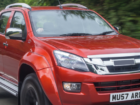Class of use is a term insurers use to describe what you use your car for. It’s one of the main factors considered when it comes to working out your car insurance premium. Here’s what the different classes of use are and why it’s crucial to make sure you use the right one.
What are the different car insurance classes of use?
When you search for car insurance, one of the first questions you’ll be asked, will be about your car’s class of use. You’ll be able to choose from one of three classes:
Social, domestic and pleasure only (SDP)
This means you only use your car for personal reasons unrelated to work. For example, this includes shopping, visiting friends and family, the school run or driving holidays.
You should only choose SDP insurance if these uses apply to you. This class of use is also sometimes known as ‘social only’.
Social, domestic and pleasure including commuting (SDP+C)
This covers everything under SDP, as well as commuting to a single place of work. It also covers driving part way to work and then switching transport — for example if you drive and then park at a train station.
If you drive someone else to their place of work but don’t drive to work yourself, you may also have to choose this class of use but check with your insurer whether or not this is the case.
This class of use generally only applies if you commute to one fixed place of work. If you’re located in more than one office or if you travel around for your job, you’ll need business use instead.

Business class of use
Business use automatically covers social, domestic and pleasure use as well as insuring you to drive to different places of work. Within this class of use, there are several different categories to choose from depending on what you specifically use your car for:
- Business use class 1 — this covers you if you drive to various different locations or workplaces, for example, if you visit regional offices.
- Business use class 2 — covers both you and a named driver. Some policies may have certain conditions, for example, you and the named driver may have to work for the same business.
- Business use class 3 — this covers business-related driving to an unlimited number of locations. This is the class of use you’ll need if you’re always on the road for work, for example if you’re a salesperson.
What is commercial travelling?
Commercial travelling is sometimes used to describe class 3 business use but insurers may have their own slightly different definitions. If your policy mentions commercial travelling, it’s best to check exactly what this means with your insurer just to be on the safe side.
Commercial car insurance on the other hand, is very different. It covers your car if it’s used as an integral part of your work, for example if you’re a delivery driver. Commercial policies come with extra options that also insure the items you carry. A word of caution — some insurers use business use and commercial use interchangeably so if you’re not clear, always ask what their definition is.
Why is class of use important?
Class of use reflects the way you use your car which in turn, influences the level of risk you face. For instance, commuters who drive during peak hours on a daily basis are statistically more likely to be involved in an accident. As a result, their insurance premiums are often higher compared to SDP drivers who only use their car to drive to the shops once a week.
When you choose the class of use, it’s important to ensure it accurately describes your usage. If it doesn’t, your insurer could refuse to pay out if you made a claim.
Find the best car insurance deals whatever your class of use
At mustard.co.uk, you can compare insurance quotes no matter how you use your car. Searching for quotes is quick and easy, all you need to do is fill in our online form and we’ll bring back deals in minutes. Alternatively, you can speak to an expert member of the team on 0330 022 8814.








